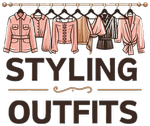The 1950s was a decade that left an indelible mark on fashion history. Following the austerity of the war years, the ’50s ushered in an era of prosperity, optimism, and a renewed focus on femininity. From Audrey Hepburn’s elegant simplicity to Marilyn Monroe’s glamorous curves, the fashion of this decade continues to inspire designers and fashion enthusiasts alike. Let’s dive into the fascinating world of 1950s fashion, exploring its iconic styles, influential designers, and lasting legacy.
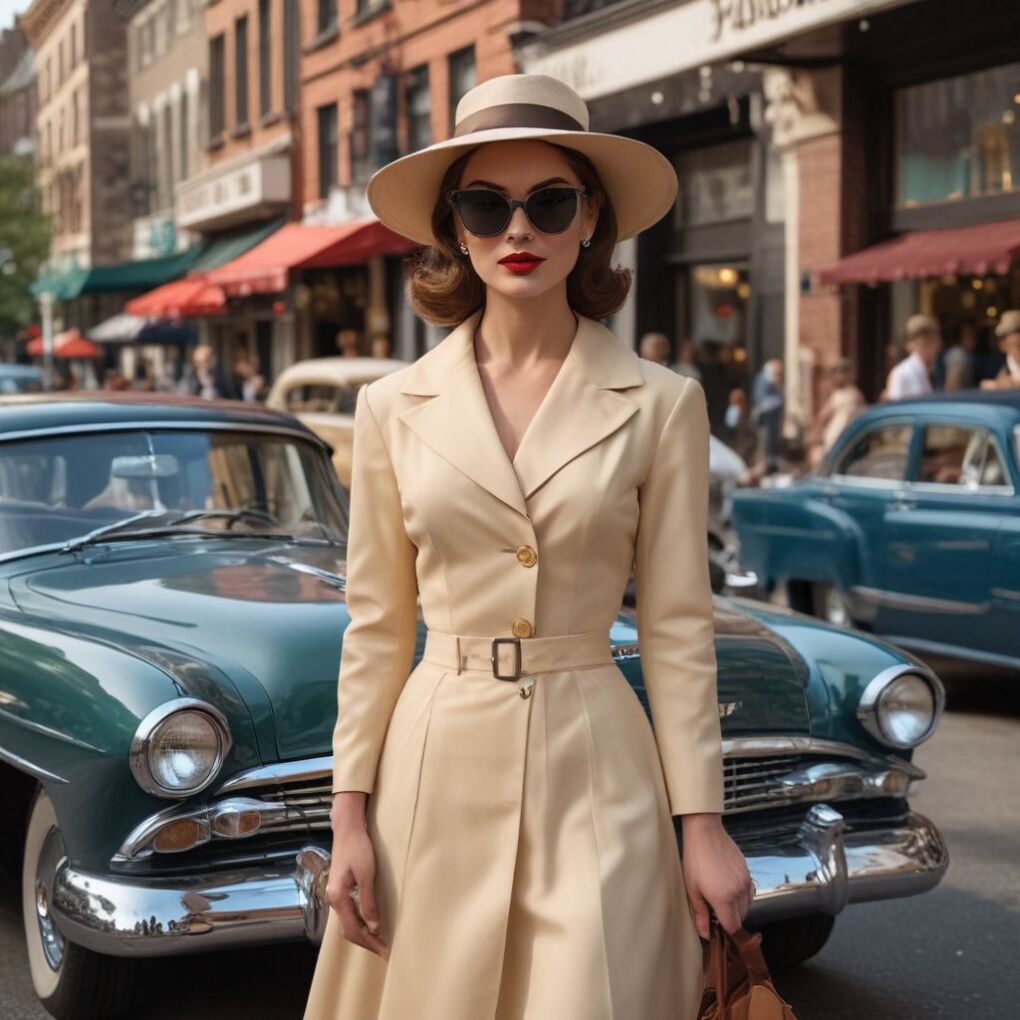
The Post-War Fashion Renaissance
In the aftermath of World War II, fashion underwent a dramatic transformation. The rationing and fabric shortages that had constrained clothing design during the war years were over, and designers were eager to unleash their creativity. Christian Dior’s “New Look,” launched in 1947, set the tone for 1950s fashion with its cinched waists, full skirts, and luxurious fabrics.
“In 1947, I designed clothes for flower-like women, with rounded shoulders, full feminine busts, and hand-span waists above enormous spreading skirts.” – Christian Dior
This silhouette, epitomizing a return to pre-war glamour and femininity, became the defining look of the decade. It represented a stark contrast to the boxy, utilitarian styles of the 1940s, reflecting the 1950s’ spirit of renewal and indulgence.
Key Elements of 1950s Women’s Fashion
The 1950s saw a variety of styles, but certain elements were ubiquitous:
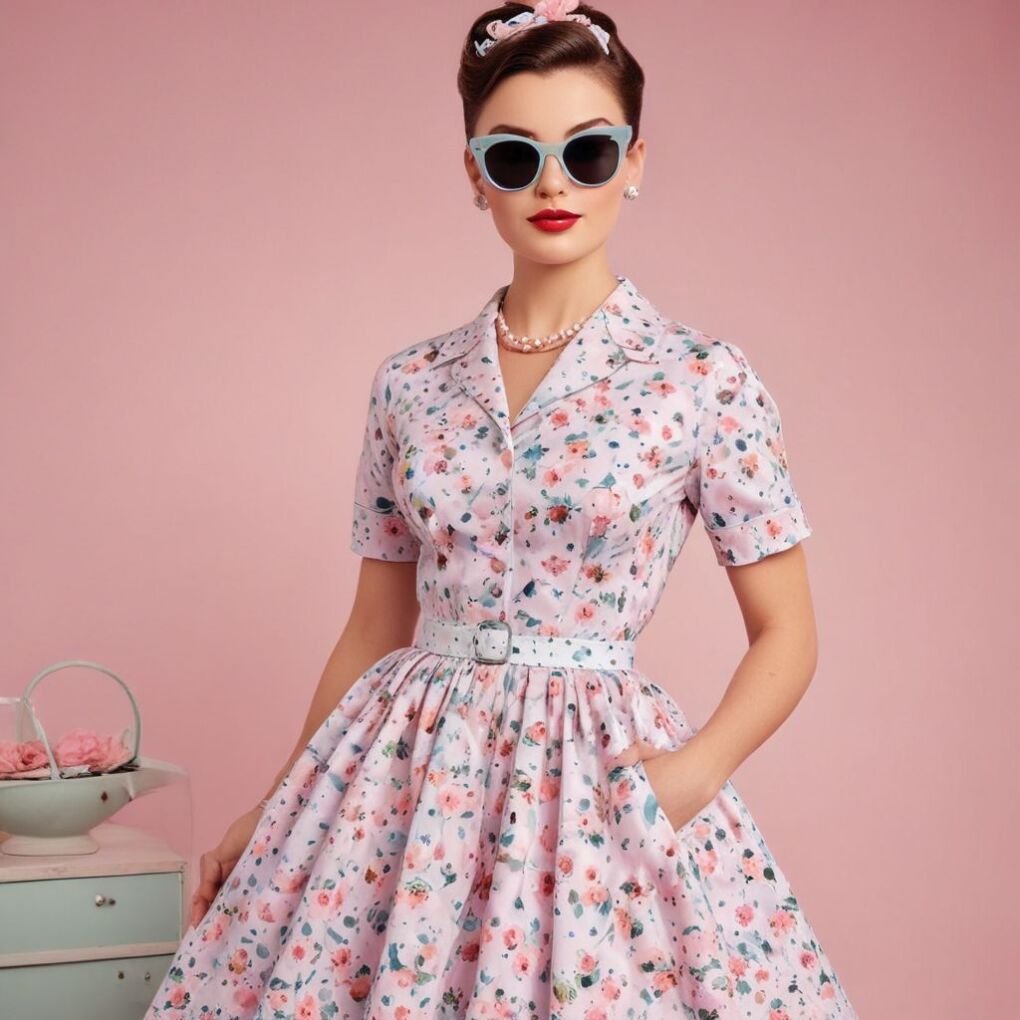
- The Hourglass Silhouette: Tiny waists, rounded busts, and full skirts created an exaggerated hourglass figure.
- Full Skirts: Circle skirts, poodle skirts, and petticoats were wardrobe staples.
- Tailored Suits: Inspired by Chanel and Dior, these featured fitted jackets and slim skirts.
- Sheath Dresses: Popularized by Marilyn Monroe, these clung to the body’s curves.
- Capri Pants: For a more casual look, especially popular among younger women.
- High Heels: Stilettos and kitten heels were essential for the elegant 1950s look.
The Most Popular Dress Styles
| Style | Description | Ideal Occasion |
|---|---|---|
| Swing Dress | Full skirt, fitted bodice | Dancing, social events |
| Sheath Dress | The skirt falls below the knee, above the ankle | Cocktail parties |
| Shirt Dress | The skirt falls below the knee, above the ankle | Everyday wear |
| Tea Length Dress | The skirt falls below the knee, above ankle | Garden parties, church |
| Trapeze Dress | Loose, A-line shape | Summer events |
Iconic Women Who Defined 1950s Style
The 1950s were blessed with a multitude of style icons, each embodying a different facet of the era’s fashion:
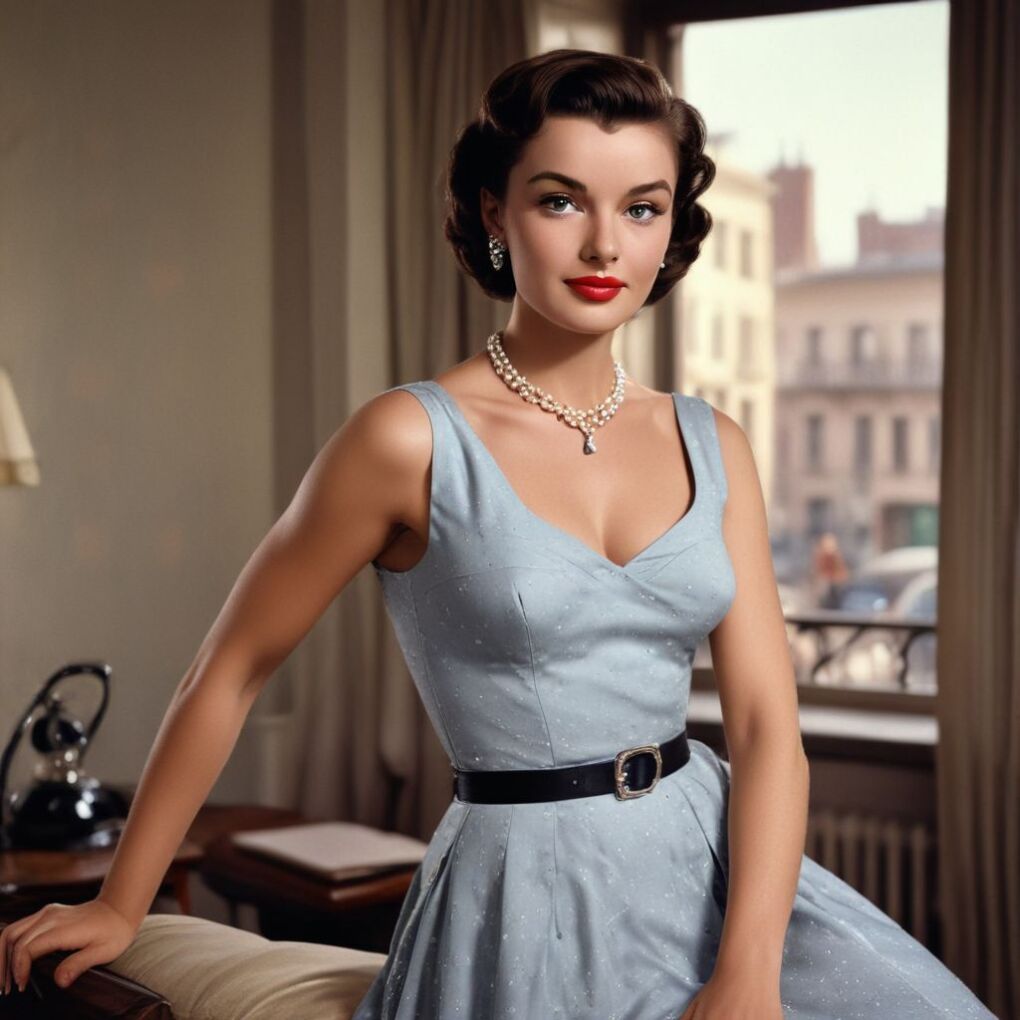
- Audrey Hepburn: Her gamine charm and elegant simplicity in films like “Roman Holiday” (1953) made her a symbol of understated chic.
- Marilyn Monroe: The ultimate sex symbol, Monroe’s curve-hugging dresses in “The Seven Year Itch” (1955) and “Some Like It Hot” (1959) epitomized glamour.
- Elizabeth Taylor: In “Cat on a Hot Tin Roof” (1958), Taylor’s combination of sensuality and sophistication reflected the era’s blend of propriety and passion.
- Grace Kelly: Before becoming Princess of Monaco, Kelly’s refined, preppy style in “Rear Window” (1954) set the standard for ladylike elegance.
These women not only wore the fashions—they helped shape them, making their mark on history through their distinctive styles.
Men’s Fashion in the 1950s
While women’s fashion saw dramatic changes, men’s fashion in the 1950s was more about refinement than revolution:
- The Gray Flannel Suit: Immortalized in the 1955 novel and film, it symbolized corporate conformity.
- The Letterman Look: Varsity jackets, chinos, and loafers were popular among college men.
- Greaser Style: Inspired by bad-boy icons like James Dean, it featured leather jackets and jeans.
- Hawaiian Shirts: For a casual, playful look, especially in summer.
- Hats: Fedoras, trilbies, and flat caps were still essential accessories.
James Dean: The Rebel’s Uniform
No discussion of 1950s men’s fashion is complete without James Dean. His look in “Rebel Without a Cause” (1955)—white T-shirt, red windbreaker, jeans, and boots—became a uniform for rebellious youth, challenging the decade’s conservative norms.
“The bad boy image was something I copied from James Dean.” – Elvis Presley
Teenage Fashion: The Birth of Youth Culture
The 1950s saw teenagers emerge as a distinct demographic with their own fashion sensibilities:
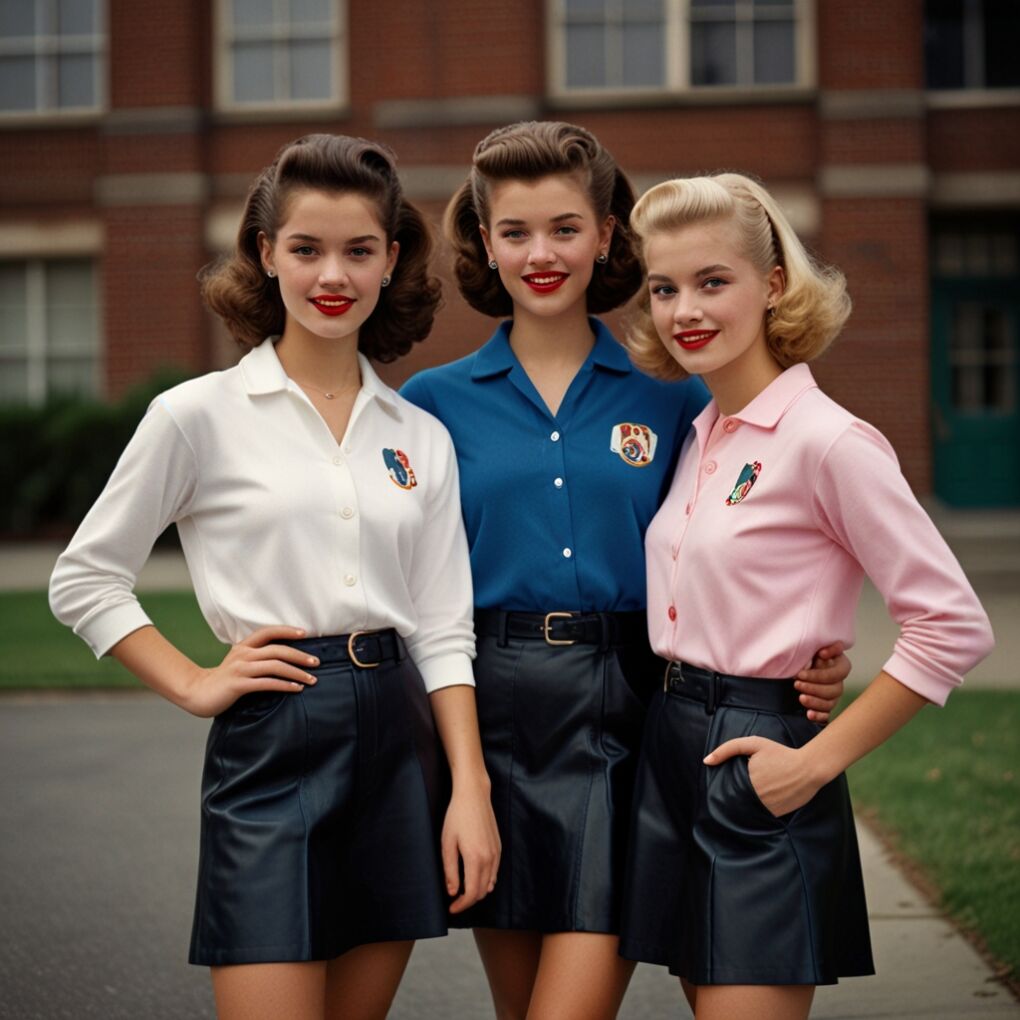
- Bobby Socks & Saddle Shoes: Essential for the poodle-skirted look.
- Letterman Jackets: A status symbol for high school athletes.
- Pedal Pushers: Calf-length pants for girls, perfect for bike rides.
- Leather Jackets: For boys emulating their greaser heroes.
- Polo Shirts: A preppy staple for both genders.
This was the first time young people had styles that markedly differed from their parents, reflecting the growing generational divide.
Swimwear: From Modesty to Bombshell
Swimwear in the 1950s reflects the decade’s journey from post-war modesty to bold sexuality:
- Early 1950s:
- One-piece suits with modest skirts
- High-waisted bikini bottoms
- Late 1950s:
- Introduction of the modern bikini
- Lower-cut one-pieces
- Bold prints: polka dots, stripes, florals
Actresses like Esther Williams in her aquatic musicals and Brigitte Bardot in “And God Created Woman” (1956) popularized these styles, turning the beach into a fashion runway.
Accessories: The Finishing Touches
In the 1950s, no outfit was complete without the right accessories:
- Gloves: Elbow-length for evening, wrist-length for day
- Pearls: Single or double strands, real or faux
- Scarves: Silk squares, often by Hermès or Vera
- Cat-Eye Glasses: Often rhinestone-studded
- Structured Handbags: By designers like Hermès and Chanel
These items weren’t just add-ons; they were integral to the 1950s look, signifying a woman’s attention to detail and commitment to elegance.
Fashion in Film: Hollywood’s Influence
Hollywood’s impact on 1950s fashion cannot be overstated. Movies weren’t just entertainment; they were style guides:
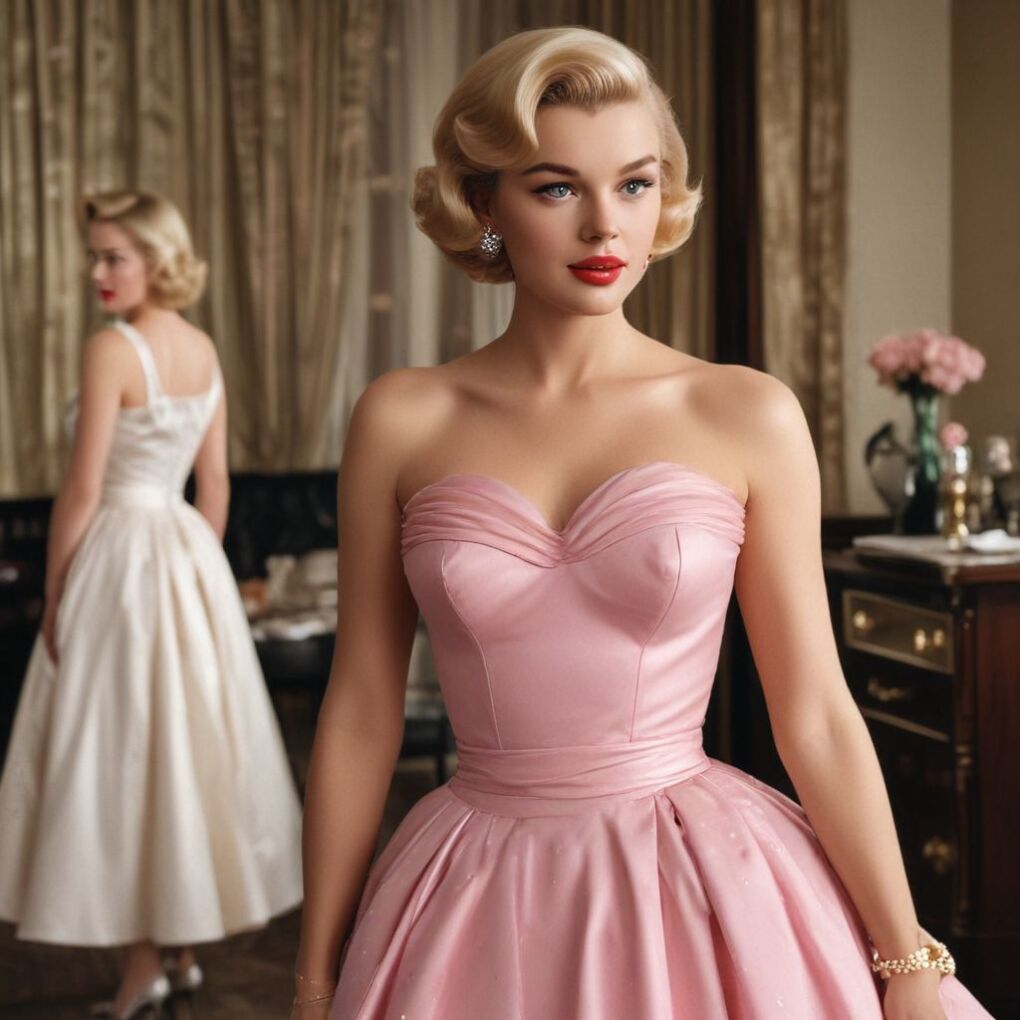
- “Gentlemen Prefer Blondes” (1953): Marilyn Monroe’s pink gown set a new standard for glamour.
- “Rear Window” (1954): Grace Kelly’s wardrobe by Edith Head was a masterclass in chic simplicity.
- “The Seven Year Itch” (1955): Monroe’s white halter dress became an iconic image.
- “Rebel Without a Cause” (1955): James Dean made jeans a symbol of youth rebellion.
- “Funny Face” (1957): Audrey Hepburn showcased Givenchy’s elegant designs.
Costume designers like Edith Head and Helen Rose were as influential as fashion designers, and their work was seen by millions worldwide.
Department Stores and Mail-Order Catalogs
Not everyone could afford designer fashions, but the 1950s’ booming economy made style accessible to more people than ever:
- Department Stores: Macy’s, Gimbels, and Marshall Field’s offered ready-to-wear fashions.
- Mail-Order Catalogs: Sears, Montgomery Ward, and Spiegel brought fashion home.
- Pattern Companies: Butterick, McCall’s, and Simplicity let women sew designer-inspired clothes.
This democratization of fashion meant that even if you couldn’t buy a Dior, you could make a dress inspired by his New Look.
The Rise of Ready-to-Wear
The 1950s saw a significant shift from custom-made clothing to ready-to-wear:
- Mass Production: New technologies made factory-made clothes more affordable.
- Standard Sizing: The development of standard sizes (2-18) made shopping easier.
- Designer Lines: High-end designers created lower-priced collections for stores.
- Youth Market: Brands like Levi’s capitalized on teens’ desire for affordable fashion.
This change made fashion more accessible but also marked the beginning of the end for many small dressmakers and tailors.
International Fashion Scenes
While American style focused on wearable glamour, other countries had their own takes on 1950s fashion:
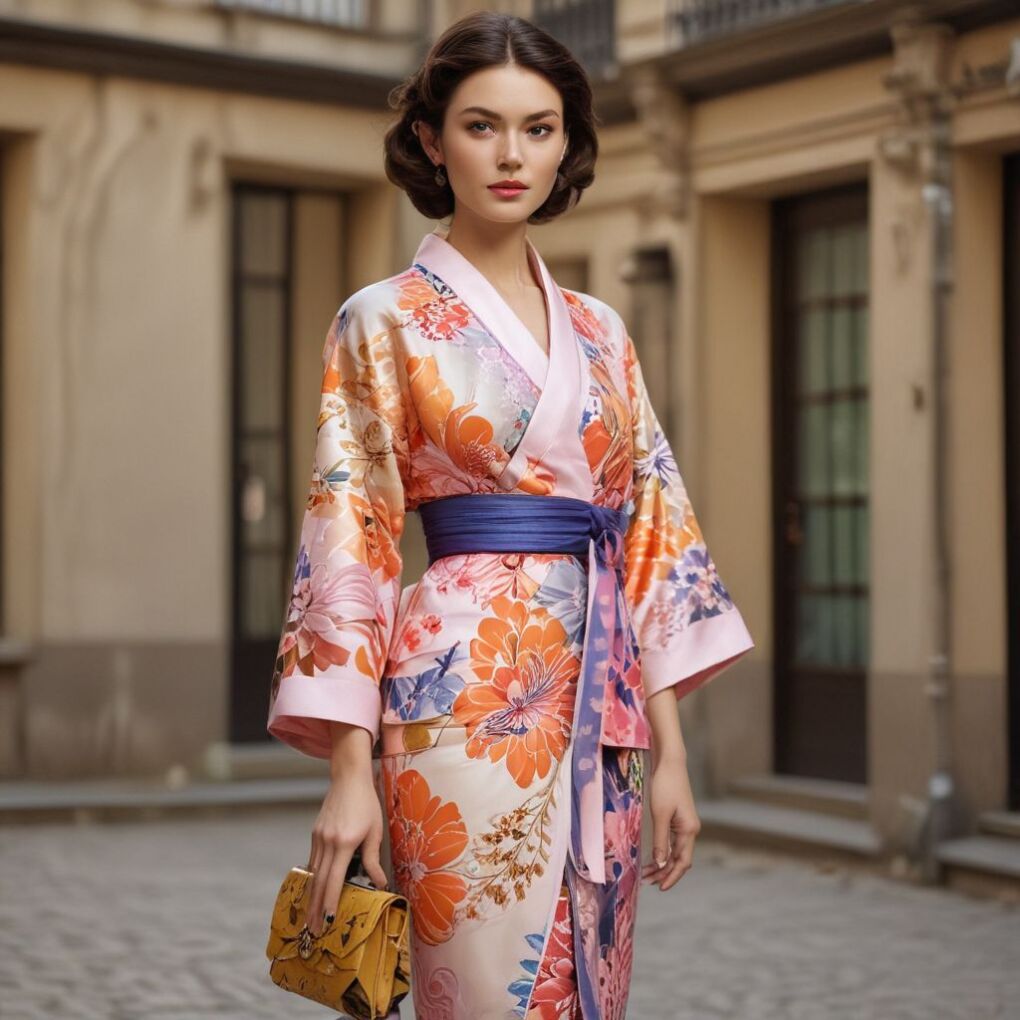
- France: Dior’s New Look reigned, but Coco Chanel’s comeback offered a contrasting, more relaxed elegance.
- Italy: A focus on fine tailoring and luxurious fabrics, with designers like Emilio Pucci gaining prominence.
- UK: A more conservative interpretation of the New Look, with a strong emphasis on quality and craftsmanship.
- Japan: A blend of traditional kimono-inspired shapes with Western silhouettes.
The End of an Era: 1960s on the Horizon
By the late 1950s, signs of the coming 1960s revolution were appearing:
- Yves Saint Laurent’s Trapeze Line (1958) for Dior hinted at the shift away from tight waistlines.
- Coco Chanel’s Comeback (1954) offered an alternative to the New Look’s constraints.
- Beat Generation Style: Turtlenecks, berets, and black began to challenge the status quo.
- Space Age Influences: Sputnik’s launch (1957) inspired futuristic motifs in prints.
These changes foreshadowed the seismic shifts that would make the 1960s a radical departure from the refined 1950s aesthetic.
The Legacy of 1950s Fashion
The 1950s’ influence on fashion is enduring:
- Retro Revivals: Brands often revisit 1950s styles, especially in the 1970s and 2010s.
- Vintage Appeal: Original 1950s pieces are prized by collectors and fashionistas.
- Cultural Impact: The decade’s looks are shorthand for an entire era’s values.
- Designer Inspirations: From Miuccia Prada to Jason Wu, many cite the 1950s as an influence.
The 1950s represent more than just a fashion period; they embody an ideal of elegance, femininity, and attention to detail that continues to resonate.
Conclusion: More Than Just Fashion
The 1950s were a golden era in fashion, offering a visual feast of elegance, innovation, and cultural significance. From Dior’s New Look to James Dean’s rebel style, the decade’s diverse trends reflected an era grappling with tradition and change. As America emerged from war into prosperity, fashion became a canvas for expressing renewed optimism and evolving social norms.
Yet, for all its beauty, 1950s fashion also mirrored the era’s constraints. Those tiny waists and impeccable outfits required discipline, sometimes discomfort. In this way, the clothes themselves symbolized the tensions of the time—between comfort and beauty, freedom and conformity.
Today, as we revisit 1950s styles, we can appreciate their artistry while recognizing the complex realities they represented. In doing so, we see that fashion is never just about clothes; it’s a mirror of our values, aspirations, and the never-ending dance between what was and what will be.
